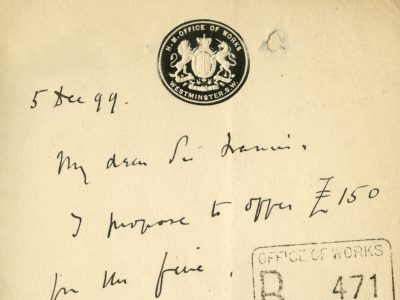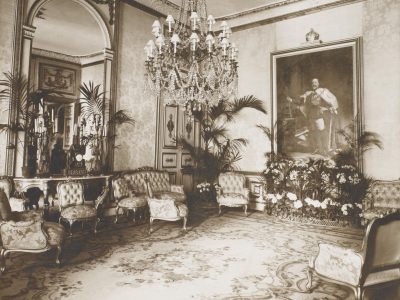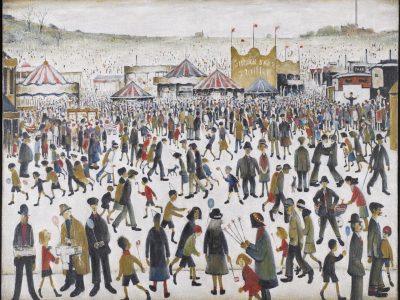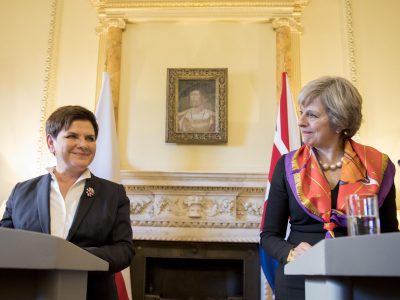History of the Collection
For 125 years, the Government Art Collection has been acquiring and displaying artworks that showcase British creativity and culture. From our humble beginnings in 1899 as a cost-effective way to decorate government rooms, we've grown into a diverse and dynamic collection that represents the UK at home and abroad.
How has this unusual Collection evolved?
The origins of the Collection
The Government Art Collection began in 1899 when a few portraits and landscapes were bought as an inexpensive way of sprucing up tired-looking government rooms in Whitehall.
From decoration to diplomacy
Images of British monarchs and famous figures brought a sense of stature to entrance halls and state rooms and raised an awareness of the powerful cultural diplomatic role that art could play.
A new demand for art
Social changes after the First World War meant an unexpected and new demand for art in Britain's embassy buildings.
Growing the Collection
By the 1930s, diplomats and officials had become accustomed to working alongside historical artworks from the Collection. It was clear that the art had an impact on how the embassy buildings were experienced by visitors.
Battlefields of Britain
During the Second World War, the funding and provision of art for government buildings and embassies was paused. A small number of works were lost, damaged or destroyed as a result of the hostilities, with one exception.
Changing art for changing Britain
Find out how the mood of post-war Britain impacted on the Collection and how it changed the art displayed on the walls of Government offices.
Portraiture
From its informal foundation by ministerial memo back in 1899, historical portraits formed some of the first purchases of the Collection and they continue to be acquired today.
A new identity to meet the world
Moving away from its imperial past and engaging with a new postwar world order, Britain began building and shaping a new identity at home and abroad.







